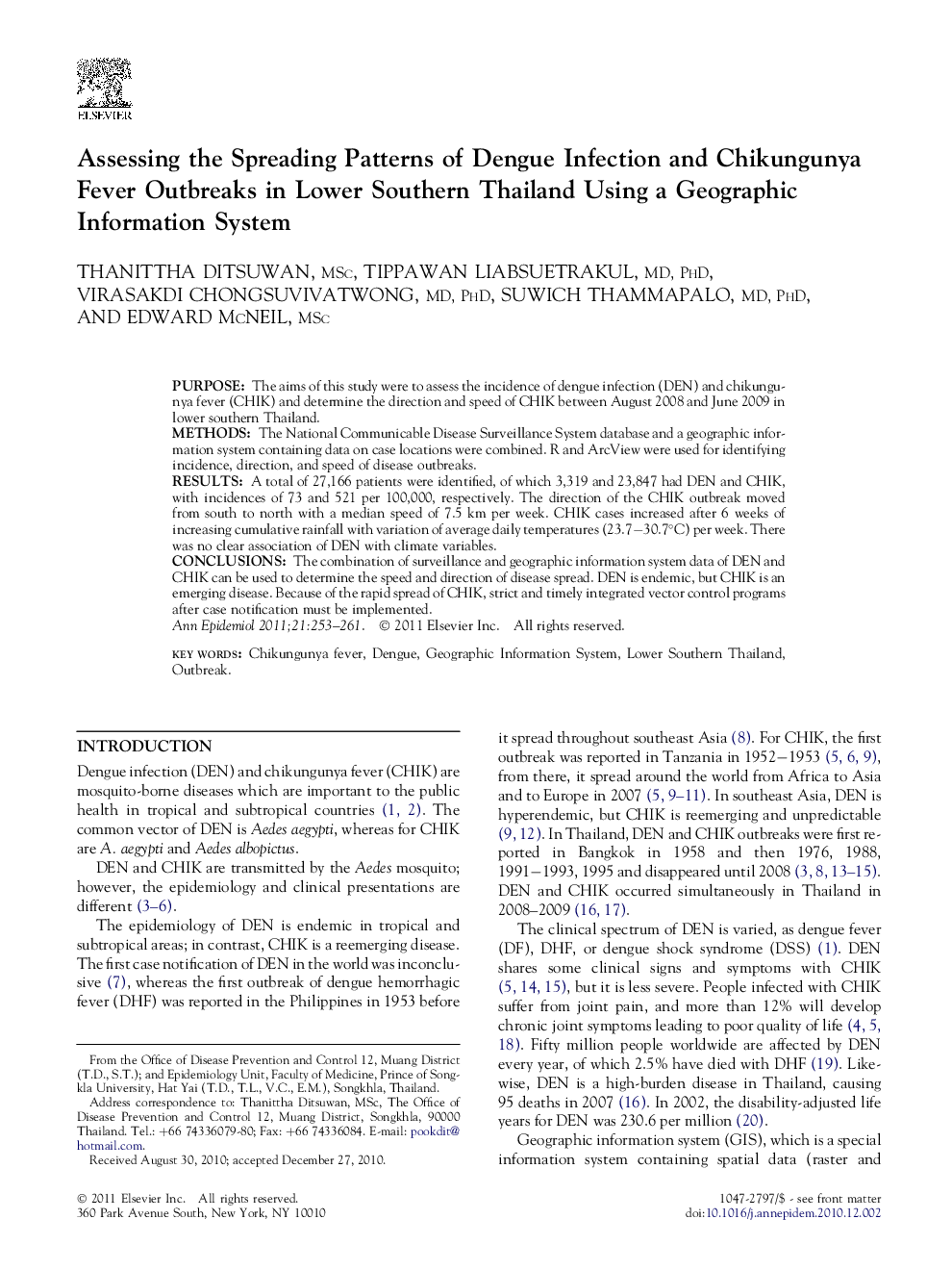| Article ID | Journal | Published Year | Pages | File Type |
|---|---|---|---|---|
| 3444582 | Annals of Epidemiology | 2011 | 9 Pages |
PurposeThe aims of this study were to assess the incidence of dengue infection (DEN) and chikungunya fever (CHIK) and determine the direction and speed of CHIK between August 2008 and June 2009 in lower southern Thailand.MethodsThe National Communicable Disease Surveillance System database and a geographic information system containing data on case locations were combined. R and ArcView were used for identifying incidence, direction, and speed of disease outbreaks.ResultsA total of 27,166 patients were identified, of which 3,319 and 23,847 had DEN and CHIK, with incidences of 73 and 521 per 100,000, respectively. The direction of the CHIK outbreak moved from south to north with a median speed of 7.5 km per week. CHIK cases increased after 6 weeks of increasing cumulative rainfall with variation of average daily temperatures (23.7−30.7°C) per week. There was no clear association of DEN with climate variables.ConclusionsThe combination of surveillance and geographic information system data of DEN and CHIK can be used to determine the speed and direction of disease spread. DEN is endemic, but CHIK is an emerging disease. Because of the rapid spread of CHIK, strict and timely integrated vector control programs after case notification must be implemented.
